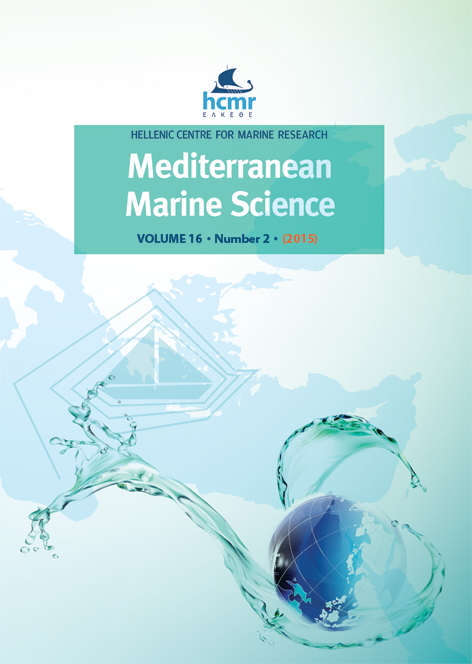Seasonal and interannual variability of the water exchange in the Turkish Straits System estimated by modelling

Περίληψη
A chain of simple linked models is used to simulate the seasonal and interannual variability of the Turkish Straits System. This chain includes two-layer hydraulic models of the Bosphorus and Dardanelles straits simulating the exchange in terms of level and density difference along each strait, and a one-dimensional area averaged layered model of the Marmara Sea. The chain of models is complemented also by the similar layered model of the Black Sea proper and by a one-layer Azov Sea model with the Kerch Strait. This linked chain of models is used to study the seasonal and interannual variability of the system in the period 1970-2009. The salinity of the Black Sea water flowing into the Aegean Sea increases by approximately 1.7 times through entrainment from the lower layer. The flow entering into the lower layer of the Dardanelles Strait from the Aegean Sea is reduced by nearly 80% when it reaches the Black Sea. In the seasonal scale, a maximal transport in the upper layer and minimal transport in the bottom layer are during winter/spring for the Bosphorus and in spring for the Dardanelles Strait, whereas minimal transport in upper layer and maximal undercurrent are during the summer for the Bosphorus Strait and autumn for the Dardanelles Strait. The increase of freshwater flux into the Black Sea in interannual time scales (41 m3s-1 per year) is accompanied by a more than twofold growth of the Dardanelles outflow to the North Aegean (102 m3s-1 per year).
Λεπτομέρειες άρθρου
- Πώς να δημιουργήσετε Αναφορές
-
MADERICH, V., ILYIN, Y., & LEMESHKO, E. (2015). Seasonal and interannual variability of the water exchange in the Turkish Straits System estimated by modelling. Mediterranean Marine Science, 16(2), 444–459. https://doi.org/10.12681/mms.1103
- Τεύχος
- Τόμ. 16 Αρ. 2 (2015)
- Ενότητα
- Research Article
Authors who publish with this journal agree to the following terms:
- Authors retain copyright and grant the journal right of first publication with the work simultaneously licensed under a Creative Commons Attribution Non-Commercial License that allows others to share the work with an acknowledgement of the work's authorship and initial publication in this journal.
- Authors are able to enter into separate, additional contractual arrangements for the non-exclusive distribution of the journal's published version of the work (e.g. post it to an institutional repository or publish it in a book), with an acknowledgement of its initial publication in this journal.
- Authors are permitted and encouraged to post their work online (preferably in institutional repositories or on their website) prior to and during the submission process, as it can lead to productive exchanges, as well as earlier and greater citation of published work (See The Effect of Open Access).




